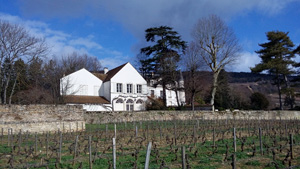
Following the introductions to the day, Jean-François, the owner and winemaker at Domaine Chapelle, took the lead, presenting the winery and its place amongst the Burgundy vineyards. We then all got booted up to immerse ourselves in the vineyard! We formed two groups, the first under the guidance of Simon, Jean-François’ son, started by learning how to prune the vines using the cordon de royat method.
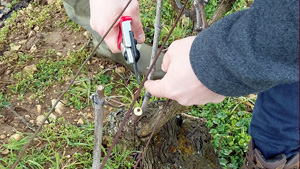
The second group started with Jean-François, learning how to fold the branch left from pruning using the guyot method, and attach it to the training wire. Jean-François also started to talk about the intricacies of working organically in the vineyard.
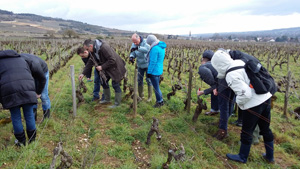
We had a great moment in the vineyard. Everyone got stuck in and we all succeeded in becoming certified pruners!
The warmth of the winery beckoned, as did the time for a typical Burgundy aperitif. Jean-François served a Santenay white wine that went down very well, accompanied by some gougères, the traditional cheese shoe pastry appetiser. During the course of the meal, including a hearty beef bourguignon, we tasted three different wines, a Burgundy red, a Santenay “Clos des Cornières”, and a Santenay “Beaurepaire” Premier Cru.
At 14:30, we returned to the vineyard to introduce ourselves to our adopted vines. After a few quick photos, we climbed the track to the Beaurepaire vineyard, which was to be our next centre of attention.
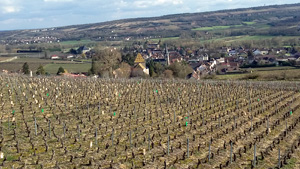
After a nice little stroll, punctuated by Jean-François’ commentary on the different soils and ways of working to till and weed them, we arrived in front of this little vine.
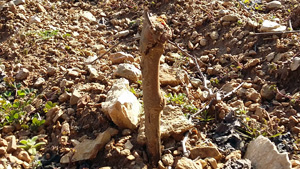
We learnt all about the work necessary to get the vine to this stage, and of the consequences replanting a vineyard has on the production. The vines are green harvested for the first two years, so that the plant focuses on its structure and root development. The first harvest is not until the 3rd year, but the wine it produces will be demoted to a lower class appellation. It’s only after about 10 years that this young vine will start to express the potential of the terroir. It’s a reminder that a winemaker has to have vision to lay down the groundwork for the future generation and so maintain the quality of the estate.
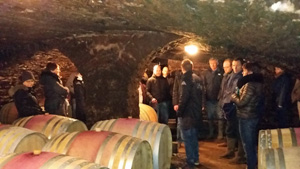
Back at the winery, Jean-François took us on a quick tour of the cellar and fermentation hall. We could see the different marks that each generation had made in the fermentation hall. Wooden casks introduced by the grandfather, concrete vats during Jean-François’ father’s time, and a host of new stainless steel vats designed to work with gravity that Jean-François had introduced in a quest to further improve the quality of his wines.
At the end of this great day, we had learnt much about the work of the winemaker and the care that must be taken in the vineyard to nurture the vines. Many thanks to all who participated
Comments
No comments.




